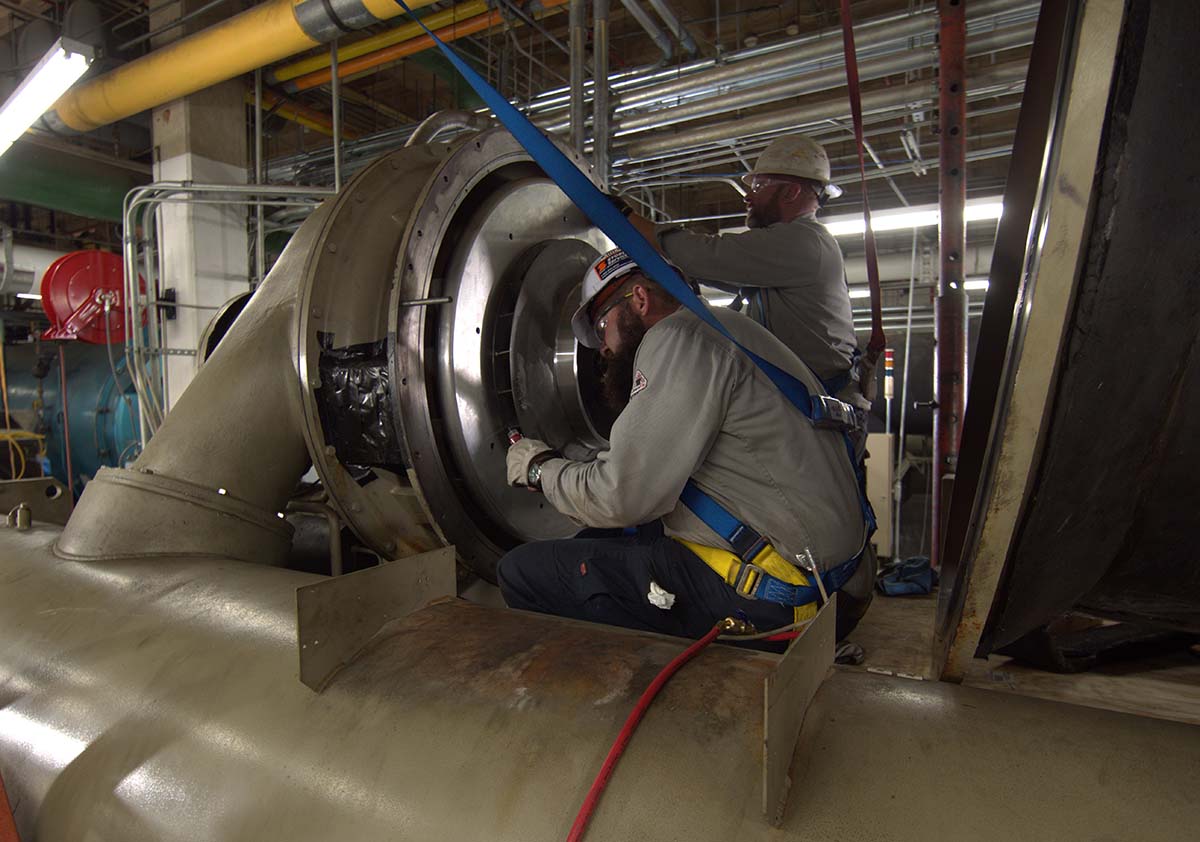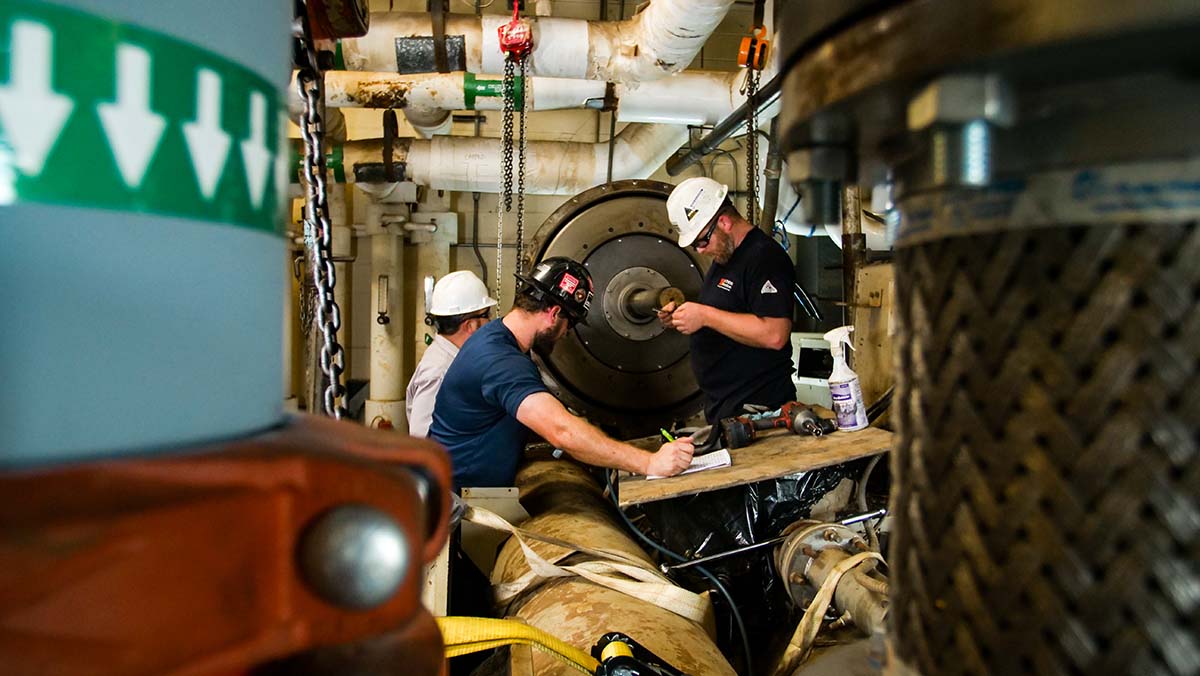When a prison loses air conditioning, it’s a big deal. It becomes a human rights issue. And the pressure is on for HVAC contractors to get it back up and running.
HVAC contractors interested in working in correctional facilities can do so by getting themselves in front of the right people, but it’s vital they read the project specifications and understand what they’re getting into. Installs in a correctional facility are different than an average commercial HVAC install. It involves a lot of security, and the stakes are higher.
executive vice president
Storer Services
High Security
While the way customers are serviced won’t change with prison installs, the approach might. It’s a higher-stakes job. For example, instead of getting a call from a building owner, an HVAC contractor would get a call from a congressman or attorney if something were to go wrong with the HVAC systems in a correction facility.
Storer Services in Shreveport, Louisiana, currently has maintenance contracts at a handful of different prisons in northern Louisiana, where the summer temperature often reaches over 100°F and prisoners cannot be without a/c. While not all prisons have retrofitted a/c, fortunately that isn’t an issue in Louisiana.
The Uniform Mechanical Code was developed by the International Association of Plumbing and Mechanical Officials (IAPMO) in order to govern the installation, inspection, and maintenance of HVAC. It provides specific code requirements as they pertain to prisons. And per compliance, prisons have to test their HVAC systems weekly to ensure they are operating as intended.
“When looking at a standard run-of-the-mill prison job, there are some pretty stringent code requirements you have to comply with, and weird nuances,” said Aaron Storer, executive vice president of Storer Services in Shreveport, Louisiana.
Normally, if an HVAC contractor were to walk into a commercial office building for a job, they’d check in and head to where the HVAC unit was and get to work. That’s not the case in correctional facilities.
First, they’ll need to receive authorization. Technicians will need to pass a background check, and if they’ve been incarcerated before, they won’t be allowed on site.
If they’re cleared, they’ll be thoroughly searched and their tools inventoried, which takes up time. When they leave the prison, they’ll be searched again to make sure no tools are missing. In high-security prisons, there’s usually someone escorting the technicians the whole time.

Brian Crow and his helper are rebuilding the Centrifugal compressor on a Trane Centravac. (Courtesy of Storer Services)
Prison Installs
Within the last 10 years, Paul Sheldon, senior development consultant at Green Prisons, an organization “committed to helping corrections find sustainable solutions to save/generate dollars, provide meaningful work and training opportunities for offenders, and to assist institutions in becoming good neighbors to their community by reducing their footprint on local environmental services,” has toured 15-20 prison facilities. He always looks at their heating, ventilation, and a/c systems because those are often the last systems to get upgraded.
“When institutions are looking to save money and increase security, there's some simple things they can do to use energy more efficiently and use water more efficiently. But putting in a new boiler or cooling system, that's a big-ticket item — it costs a lot of money to do that, and it's not as easy as replacing light bulbs, ” Sheldon said.
The design of HVAC systems in correctional facilities varies. However, a lot of the systems are designed with redundant equipment, so if one system goes down, there’s a backup.
If they don’t have redundant systems, Storer said, typically they’ll want some sort of contingency plan that says how they’ll get a piece of rental equipment piped in so they can get cooling on as soon as possible.
“So even if there weren’t a redundant system, they've got some mechanism to bring in a temporary and hook it in and do it in a quick manner,” Storer said.
Something unique about prison installs are “burglar bars,” which are vertical bars put up in ductwork, where air can penetrate but no human can. In other words, there won’t be any Bruce Willis in Die Hard wannabes crawling in the ducts.
“Plan on a little bit of extra time, because getting into prisons, getting access, having to go through the whole check-in process, having tools inventoried, it takes longer than you think,” Storer said. “And you need to make sure that you're pricing that into your job.”

Casey Jones overhauls a Trane Centravac Chiller. What you are looking at is the inside of the centrifugal compressor. (Courtesy of Storer Services)
Landing the Job
If all this sounds acceptable to an HVAC contractor, there are ways to land the jobs. The first step is to figure out which administration applies to which job the HVAC contractor is interested in. Prisons and jails are administered by different entities — federal prisons are administered by the federal government, and state and county facilities are administered by whatever state and county it’s in.
“All of it is public bid, so anything that you're going to do is going to be published,” Storer said. “So if you’re in getting into prison work, you could subscribe to any of the state websites. There's generally a state procurement website that they can go to where things get published and they can bid on [jobs].”
To land work at a county jail, it might be a good idea to get to know the administration of the county.
“If you know your sheriff, you can reach out to talk about potential HVAC in the [county jail],” Storer said. “Generally, a lot of big county prisons are administered by the sheriff.”
Federal jobs are a little more complicated, as they require registration and certain qualifications. But HVAC contractors can certainly put in a call and ask where they need to go to bid on HVAC work in jails or prisons.

Another angle of a Trane centrifugal compressor overhaul. (Courtesy of Storer Services)
Bound by the Budget
In Sheldon’s experience, the U.S. has only a small number of institutions willing to undertake what’s necessary to maintain proper HVAC systems. Instead, they’ll tend to replace or repair HVAC systems when needed, at the end of their life.&
One obstacle is that oftentimes, institutions won’t look at lifecycle operating costs. While they may look at what it’ll cost to replace an HVAC unit, they won’t necessarily look at the cost to operate that system over the next 20 years.
“And that's the part that is very difficult to administer, because prisons and jails typically control their annual operating costs, and it's a different approval process to invest in an expense that's going to take five or 10 or 15 years to amortize the cost,” Sheldon said. “And that is what I call a split incentive.”
In other words, one group of people controls the annual budget, but a different group of people controls the capital investment budget. With the capital investment, people might only be concerned about the installation cost, because they aren’t the ones paying the operating costs. And those who handle the operating costs might not have the authority to approve the capital investment.
“And it gets a little more complicated with prisons and jails because sometimes the utility bills are paid out of the general fund of the government entity … and they don't pay attention to the utility bills, because it's just considered an overhead operating expense, and not all agencies will look at efficiency,” Sheldon said.
Many institutions are underfunded and understaffed, causing poor organization within the facilities, and fall short of their mission to protect the public, protect the staff, and reduce recidivism. In Sheldon’s opinion, to fix this might require a mandate.
“When there's a mandate, that’s when people look up,” he said.
While HVAC contractors may not be able to fix the incarceration system themselves, they can continue to provide thoughtful, innovative service in correctional facilities. Part of this is paying extra attention to those specifications put out on potential jobs that’ll inform them of any special requirements, the project scopes, how quickly it needs to be done — the stakes of the job.
“You really want to read that,” Storer said. “Doing work in a prison is not going to be the same as going into a commercial office; you need to understand the difference.”








